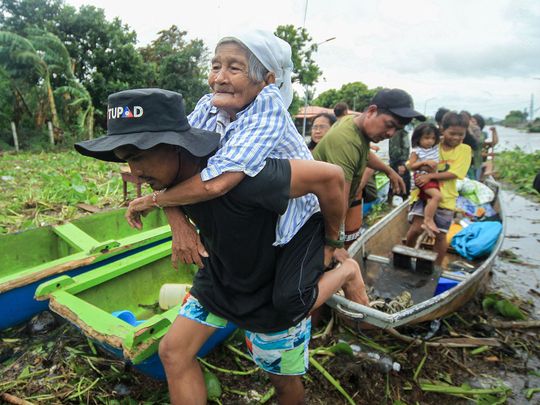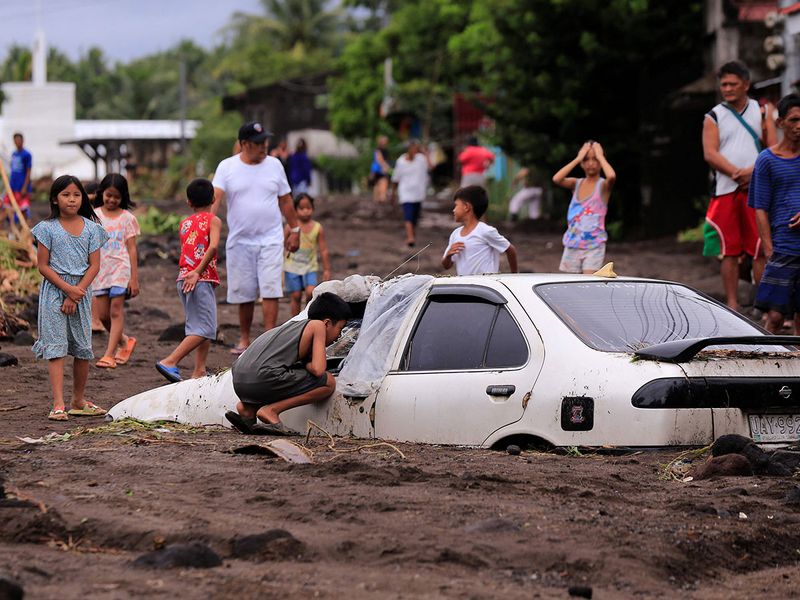
Manila: Philippine rescue workers battled floodwaters Friday to reach residents still trapped on the roofs of their homes as Tropical Storm Trami moved out to sea after killing at least 40 people.
Tens of thousands remained displaced after fleeing floods driven by a torrential downpour that dumped two months' worth of rainfall in just two days in some areas.
"Many are still trapped on the roofs of their homes and asking for help," Andre Dizon, police director for the hard-hit Bicol region, told AFP. "We are hoping that the floods will subside today, since the rain has stopped."
He added that a shortage of rubber boats was "the greatest challenge" but that more were on their way.
As Trami departed the Philippines in the early hours, traveling west over the South China Sea, the storm's death toll swelled as fresh reports of victims emerged.
In Batangas province south of the capital Manila, police staff sergeant Nelson Cabuso told AFP six unidentified bodies had been found in Sampaloc village.
"The area was hit by a flash flood yesterday. Our people are still in the area to check if there are other casualties," he said.
Many areas of the province remained inaccessible to search and rescue teams, local media reported.
Another five people were killed in a flash flood in the coastal village of Subic Ilaya, police corporal Alvin de Leon said.
While Manila was seemingly spared the kind of heavy flooding that accompanied Typhoon Gaemi in July, AFP reporters on Friday saw a subdivision south of the capital that was largely submerged.
Two months' worth of rain
Government offices and schools across the main island of Luzon remained shuttered Friday, and storm surge warnings were still in place along the west coast, with potential waves as high as two metres.
State weather agency specialist Jofren Habaluyas told AFP that Batangas province had seen "two months' worth of rain", or 391.3 millimetres, fall over October 24 and 25.

An official tally late Thursday reported 193,000 people evacuated in the face of flooding that turned streets into rivers and half-buried some towns in sludge-like volcanic sediment set loose by the storm.
Many of those were in the Bicol region, where more than 30,000 fled Wednesday alone in the face of "unexpectedly high" flooding.
Rescuers in the region's Naga city and Nabua municipality used boats to reach residents stranded on rooftops, many of whom sought assistance via Facebook posts.
In the Batangas town of Lemery, about 97 kilometres (60 miles) south of Manila, a hospital was forced to turn away patients as its wards and emergency rooms were flooded.
And the search for a missing fisherman whose boat sunk in the waters off Bulacan province west of Manila remained suspended on Friday due to strong currents, the local disaster office said.
About 20 big storms and typhoons hit the Philippines or its surrounding waters each year, damaging homes and infrastructure and killing dozens of people.
But a recent study showed that storms in the Asia-Pacific region are increasingly forming closer to coastlines, intensifying more rapidly and lasting longer over land due to climate change.












